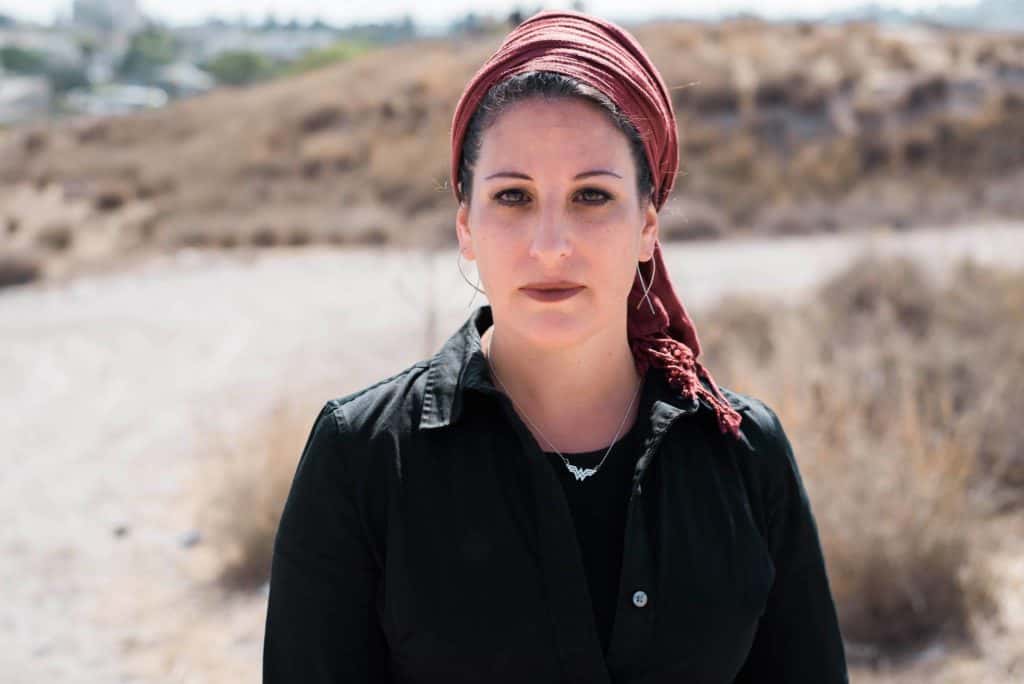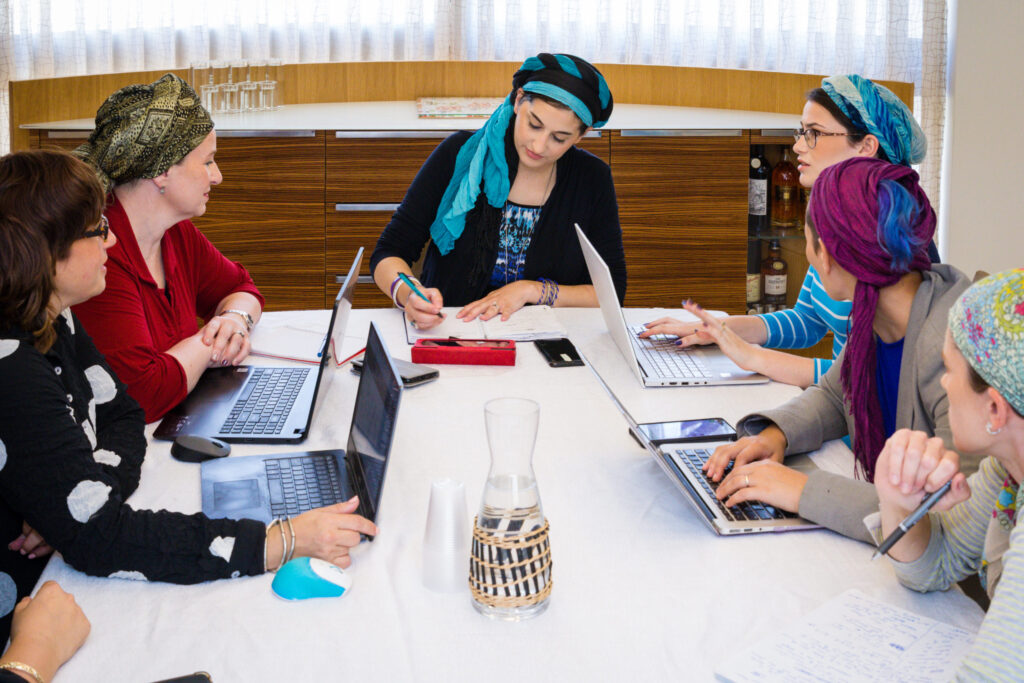Both the Orthodox Union and the Rabbinical Council of America position themselves as rabbinic leadership for (at least) the Orthodox community in the United States. Both maintain that a key component of the Orthodox community is “listening to the rabbis.” Both have condemned in no uncertain terms the concept of Orthodox women clergy, and both have emphasized the vital position and importance of Jewish women in the community.
It baffles me, therefore, that neither the OU nor the RCA has taken a stand against the damaging practice of removing Jewish women and girls from publications that is taking over Orthodox society.
This practice began in the most insular Orthodox communities over the past two decades, and has now become the dominant practice of Orthodox publications, to the great dismay of Orthodox women everywhere.
Entire magazines are devoid of women. There are children’s books, textbooks, comics, and advertisements in which no mothers and no daughters are represented. Beautifully illustrated Shabbat zemirot booklets have grandfathers, fathers and sons; there are no grandmothers, mothers, or daughters. I even have an illustrated Megillat Esther sans Esther.

It’s a bizarre and sad world in which Jewish women are considered immodest, no matter how modestly they dress and act…
Both the OU and the RCA use glowing terms to depict Jewish women in their statements on women clergy:
From the OU: “…female role models are, of course, absolutely critical for the spiritual growth of our community. Communities depend, and have always depended, upon women’s participation in a wide array of critical roles, both lay and professional, that are wholly consistent with Torah’s guidelines.”
From the RCA: “…the Rabbinical Council of America encourages a diversity of halakhically and communally appropriate professional opportunities for learned, committed women, in the service of our collective mission to preserve and transmit our heritage….
Given their recognition of the importance of women in the community at large and their stated respect for women, I found it shocking when, earlier this month, the Orthodox Union’s Jewish Action magazine praised and highlighted the very publications that censor images of Jewish women and girls. The multi-page spread paradoxically spotlighted the women who work for these same publications, while ignoring the fact none of these women — or any other one — can appear in their own publications.
Mishpacha is one of the most prominent publications to omit images of women and girls. When it recently profiled Mrs. Yehudis Jaffe, the article was accompanied by photographs of the educator’s husband and father.

Similarly, in these publications, advertisements show smiling male professionals — real estate agents or dentists, for example — yet their female colleagues are represented by flowers, shapeless icons, or simply a name. The uneven portrayal of men and women doing the same job looks ridiculous, but worse is the fact that, since photographs are worth a thousand words of marketing, the female business owners are at a competitive disadvantage with regard to their market share, with reduced chances for livelihood and clientele.

Tens of thousands of Orthodox women, who adhere to the publications’ values outside of this deeply painful and humiliating policy, find the approach disturbing and puzzling. There are Facebook groups dedicated to the sole effort of changing these policies. These women want visible role models for their daughters. They want to see people they identify with in the pages of magazines. They are hurt and confused at the notion that the very presence of a modestly dressed Jewish woman — or girl– is taboo.

From the women themselves (ironically enough, names have been changed for their protection):
On finding Jewish women inappropriate and removing positive role models:
“I find it extremely distressing that you refuse to print pictures of girls over 6[-years-old] or appropriately dressed women. In a world where we are constantly bombarded with images of what women ‘should’ look like to be the ‘most’ attractive, it is even more important that our girls can look to frum media for appropriate role models.” — Dina
From a father and rabbi:
“…there is a stark difference between my reading experience and that of my wife and daughters, because whereas the main magazine contains pictures of male role models to whom I aspire, the Family First and Mishpacha Junior magazine don’t have pictures of female role models to whom my wife and daughters wish to aspire, and while ‘a picture tells a thousand words,’ it seems for women, they just have to settle with words. …Tzniut is a positive value, not a negative one, and by failing to publish pictures of tzanua women in your publication, the implied message is that no matter how appropriately dressed a woman is, she is still somehow doing something wrong. As someone who teaches young women in seminary, I assure you that whether this is your intended message, it is the message being received by young women — and even not so young women. The level of anxiousness about tzniut observance today, especially among young women, is unhealthily high, and there are many young women whose self-value and self-esteem is suffering for lack of confidence that they appear as they should, because they lack the examples and role models of what that actually means.” — Rabbi Solinsky
On feeling erased and having nothing to relate to:
“Your family magazine is positioned to show my daughters — and their future zivugim [marriage partners] — what Jewish women can be and should be, within the bounds of halacha. I wish that when my girls look in your magazine and see the amazing people and complex issues of the frum world, that they can begin to see themselves — their tafkid [purpose] — their unique path to avodas Hashem [service of God]. They should not grow up feeling like “strangers” in a world that simply erases them…Role models in Tanach [the Bible] exist, and are revered, but is that relatable? For my daughters, where are their people?” — Sarah
On the lack of halachic basis for censoring Jewish women:
“I do not see how you can justify this practice. To the best of my knowledge, it has no halachic basis and I challenge you to prove otherwise. Just as it was only a few generations ago that men and women sat together at wedding dinners but now are separated, so too, photos of “tzniusdik [modest] Jewish women are as hidden as — lehavdil, Muslim women under burkas. Before you roll your eyes at this, ask yourselves: to what further extent will Jewish women be hidden as they are? What will stop this trend toward narrower and narrower parameters?” — Bracha
On the objectification of Jewish women and girls:
“One of the things that pulled me towards Yiddishkeit [Judaism] from my secular life was what I was told about the status of women: how we were special, different but equal in importance, and how we would not be judged by our bodies but by our shining souls and personalities. It is something I hope to share with my children someday…
When you refuse to print pictures of women in your magazine, it goes against what I was taught. Instead, it shows that women are too dangerous to be seen, that we must be hidden away. This is judging women by their bodies, just as the secular culture I left does. It does not display that women are in any way equal… Not only are you putting women down, you are also doing the same to men. While not displaying pornographic images is clearly commendable, not displaying pictures of women at all implies that any sight of a woman is dangerous to a man, that he is totally incapable of controlling himself when confronted with an image of a properly dressed woman or girl. That too says that women are being judged. Being judged as dangerous..”– Chana

By the hundreds, frum women have contacted the publications to request a change in policy. The responses range from polite “thank you for your feedback” notes to the clear revelation that the feelings of the women for whom the magazines are designed are not important, and neither is halacha or hashkafa.
One example: The annual auction brochure published by Oorah, an organization designed to bring families and children opportunities to connect with their Jewish heritage, contains no images of women. Many, many women emailed the organization to express their dismay, and their intent not to contribute to the cause until pictures of females are returned to the publication. The formal response, received by many, according to their comments on one of those Facebook groups:
Thank you for contacting us. We struggle with this question every year. While we may not agree with it hashkafically, we recognize that, from a fundraising standpoint, it would turn off much of our donor base … we are following the decision of mainstream frum publications who have made this the standard in frum publications.”
Who created this particular standard? Donors? Advertisers? Who then needs rabbinic leadership, if economics drives Jewish policy?
The OU and RCA came out strongly against women clergy of any kind. Their numerous statements and 17-page paper on the matter make their position clear, even as the same documents praise Jewish women and proclaim that they are to be valued. Yet the concerns of the Orthodox women who look to the OU and RCA for rabbinic leadership — women who value Torah and tzniut and truth — are not even on the radar of these organizations. How else to explain their silence on this issue of censorship and objectification that matters so much to so many?
Without question, this policy of removing nearly all images of women and girls from Orthodox publications alienates Jewish women from those who represent Torah. To be clear: the same women that the OU and RCA respect for their place in tradition find themselves excluded by the extreme changes to that tradition, and cannot all remain committed to views that, in fact, are not tradition.
I urge the established Orthodox leadership, in the form of the venerable institutions of the OU and the RCA, to take a stand against this damaging practice of disappearing images of modest Jewish women from Orthodox publications, and stand up for the dignity of Jewish women.







